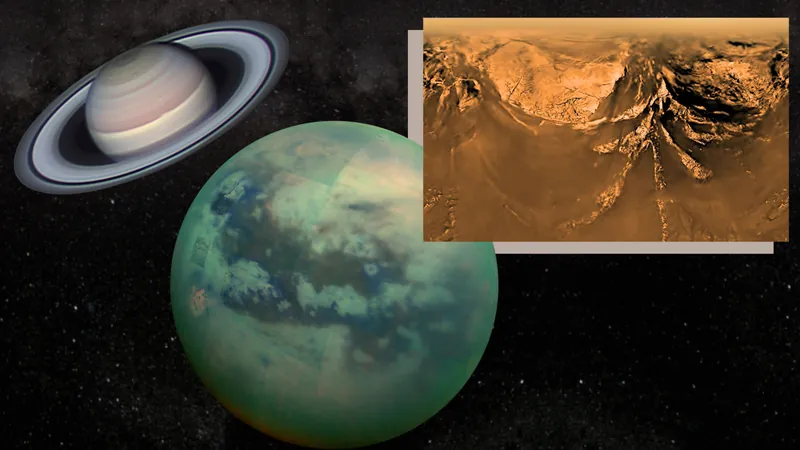
Could Life’s Building Blocks Be Forming in the Lakes of Saturn's Mysterious Moon Titan?
2025-07-15
Author: Wei
Exciting News from NASA: Life’s Precursors Found on Titan
NASA scientists have unveiled groundbreaking findings suggesting that cell-like structures known as vesicles—essential for the formation of living cells—might form in the hydrocarbon lakes of Titan, Saturn’s largest moon.
Titan's Unique Environment: A Recipe for Life?
Unlike Earth, where life is heavily reliant on water, Titan’s lakes and seas are filled with liquid hydrocarbons such as ethane and methane. While this may seem inhospitable, astrobiologists theorize that these hydrocarbons could nurture the molecular precursors of life, leading to forms of existence that might differ vastly from what we know.
New Research Sparks Hope
The latest research reveals potential mechanisms for vesicle formation on Titan, informed by its unique atmospheric chemistry. Conor Nixon from NASA's Goddard Space Flight Center highlighted the implications: "The existence of vesicles would signify a leap in complexity essential for life’s origin. These insights could reshape our Titan exploration and how we search for extraterrestrial life."
How Could These Vesicles Form?
The creation of vesicles begins with amphiphiles—molecules that possess both hydrophilic (water-attracting) and hydrophobic (water-repelling) characteristics. On Earth, these molecules cluster together in water, forming bubble-like structures. On Titan, though, the process would look quite different due to the moon's cool climate and dense atmosphere.
Titan's Atmospheric Dynamics
As the most massive moon in our solar system, Titan boasts the thickest atmosphere enriched with nitrogen, preventing solar wind from stripping it away. The Cassini spacecraft, which explored Titan from 2004 to 2017, provided invaluable insights into how Titan’s meteorology shapes its surface.
Methane: The Catalyst for Complexity
Titan’s atmosphere, mostly nitrogen, is punctuated by methane clouds that erode the surface and create river channels. When sunlight interacts with methane, it breaks down into various fragments that can then recombine into complex organic molecules, creating a rich chemical tapestry.
The Vesicle Formation Hypothesis
The research team proposes a fascinating scenario where vesicles might form when methane raindrops strike Titan’s surface, spraying droplets into the atmosphere. If these droplets encounter amphiphiles coating the lakes, they could create bilayer vesicles, encapsulating the original droplet.
A Pathway to Protocells?
As these vesicles diffuse through Titan's lakes, they may interact and evolve, potentially giving rise to protocells—the stepping stones toward life.
What’s Next? NASA’s Dragonfly Mission
These revelations are particularly timely as NASA gears up for the Dragonfly mission, set to launch in 2028 and arrive at Titan in 2034. This innovative rotocopter will explore the moon’s prebiotic chemistry and assess its habitability, offering a window into the processes that could illuminate the origins of life, both on Earth and beyond.
Understanding Life’s Beginnings
If vesicles do exist on Titan, it could significantly enhance our understanding of life's emergence, not just on our planet, but across the cosmos.




 Brasil (PT)
Brasil (PT)
 Canada (EN)
Canada (EN)
 Chile (ES)
Chile (ES)
 Česko (CS)
Česko (CS)
 대한민국 (KO)
대한민국 (KO)
 España (ES)
España (ES)
 France (FR)
France (FR)
 Hong Kong (EN)
Hong Kong (EN)
 Italia (IT)
Italia (IT)
 日本 (JA)
日本 (JA)
 Magyarország (HU)
Magyarország (HU)
 Norge (NO)
Norge (NO)
 Polska (PL)
Polska (PL)
 Schweiz (DE)
Schweiz (DE)
 Singapore (EN)
Singapore (EN)
 Sverige (SV)
Sverige (SV)
 Suomi (FI)
Suomi (FI)
 Türkiye (TR)
Türkiye (TR)
 الإمارات العربية المتحدة (AR)
الإمارات العربية المتحدة (AR)